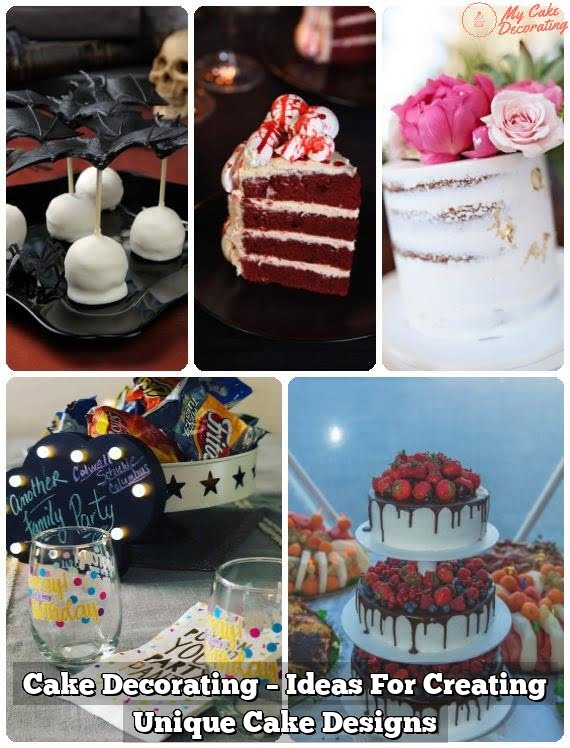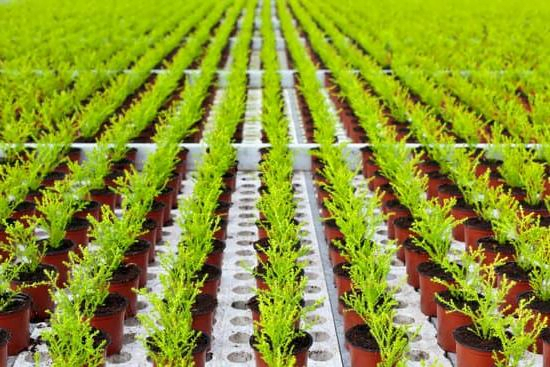Are you looking to elevate your baking skills and impress your friends and family with stunning cake designs? In this article, we will explore the world of cake decorating designs and teach you how to create beautiful works of edible art. From essential tools and materials to advanced techniques, we’ve got you covered on everything you need to know about creating eye-catching cakes.
When it comes to cake decorating, having the right tools and materials is essential. Whether it’s piping bags, tips, fondant molds, or edible paints, each item plays a crucial role in bringing your design ideas to life. We will discuss the must-have items for every aspiring cake decorator’s toolkit and guide you on where to find them.
Choosing the perfect cake base is also an important aspect of creating a visually appealing design. Depending on the theme or occasion, different types of cakes work best for specific designs. We will provide tips on selecting the ideal cake base that complements your overall vision and ensures a flawless finished product. Stay tuned as we delve into the step-by-step process of basic cake decorating techniques in our following sections.
Essential Tools and Materials for Cake Decorating
When it comes to creating beautiful cake decorating designs, having the right tools and materials is essential. Whether you are a beginner or a seasoned baker, having a well-stocked toolkit can make all the difference in achieving professional-looking results. Here are some essential tools and materials that every cake decorator should have:
Piping Tips and Bags
One of the most important tools for cake decorating is piping tips and bags. These allow you to create various designs and textures on your cakes, such as swirls, rosettes, and borders. Make sure to have a variety of tips in different sizes and shapes to achieve different looks.
Offset Spatula
An offset spatula is another essential tool for cake decorating as it helps to spread frosting smoothly on the cake’s surface. This tool is also useful for creating smooth finishes and sharp edges on cakes.
Turntable
A turntable is a must-have for any cake decorator as it allows you to easily rotate your cake while decorating, ensuring even coverage and precise designs. Invest in a sturdy turntable that can support the weight of your cakes without wobbling.
By having these essential tools and materials in your arsenal, you will be well-equipped to tackle various cake decorating projects with confidence. Experiment with different techniques and explore new possibilities on how to cake decorating designs by utilizing these tools effectively.
Choosing the Perfect Cake Base for Your Design
When it comes to creating stunning cake designs, choosing the perfect cake base is essential. The type of cake you use as your canvas can greatly impact the final look and taste of your creation. Here are some key factors to consider when selecting the ideal cake base for your design:
- Flavor: Consider the flavor profile of your design and choose a cake flavor that complements it. For example, a rich chocolate cake might be perfect for a decadent design, while a light and fluffy vanilla sponge could work well for something more delicate.
- Texture: The texture of the cake is also important. A dense pound cake may be better suited for sculpting intricate designs, while a moist chiffon cake could be ideal for layered creations.
- Size and Shape: Think about the size and shape of your final design when selecting a cake base. A round cake might be best for a traditional tiered wedding cake, while a rectangular sheet cake could work well for themed designs or patterns.
Experiment with different types of cakes to see which one works best for your specific design. Remember that practice makes perfect when it comes to mastering how to cake decorating designs.
Need Ideas on What Type of Cakes to Choose? Check Out This List of Popular Options
- Red Velvet Cake – known for its vibrant color and subtle cocoa flavor
- Lemon Drizzle Cake – perfect for light and zesty designs
- Carrot Cake – great for rustic or earthy themed decorations
- Rainbow Cake – ideal for bright and colorful creations
- Cheesecake – unique base option for non-traditional designs
By carefully selecting the right cake base, you can set yourself up for success when it comes to creating beautiful and delicious cakes that are sure to impress. So, don’t underestimate the importance of choosing the perfect foundation for your next masterpiece in how to cake decorating designs.
Step-by-Step Guide to Basic Cake Decorating Techniques
When it comes to mastering the art of cake decorating, having a solid understanding of basic techniques is essential. Whether you’re a beginner or looking to brush up on your skills, following a step-by-step guide can help you create beautiful designs that will impress your friends and family. Here are some essential basic cake decorating techniques to get you started:
- Crumb Coating: Before diving into intricate designs, start by applying a crumb coat to your cake. This thin layer of frosting helps seal in any loose crumbs, making it easier to achieve a smooth finish later on.
- Piping: Piping is a fundamental skill in cake decorating that involves using a piping bag and various tips to create different shapes and designs with frosting. Practice piping lines, dots, borders, swirls, and rosettes on a practice board before moving on to your cake.
- Smooth Frosting: To achieve a flawless finish on your cake, use an offset spatula to apply a thick layer of frosting and then smooth it out using a bench scraper or icing smoother. This technique takes practice but results in professional-looking cakes.
Once you’ve mastered these basic techniques, you’ll be ready to move on to more advanced cake decorating skills. Remember, practice makes perfect when it comes to honing your skills in how to cake decorating designs.
Advanced Cake Decorating Techniques for Intricate Designs
Are you ready to take your cake decorating skills to the next level? In this section, we will explore advanced cake decorating techniques for creating intricate and eye-catching designs that are sure to impress your friends and family. Whether you’re looking to challenge yourself with new techniques or simply want to elevate your cake decorating game, these tips and tricks will help you achieve professional-looking results.
Using Piping Techniques for Intricate Details
One of the key elements in creating intricate cake designs is mastering piping techniques. From delicate lace patterns to intricate floral designs, piping allows you to add fine details and decorative touches to your cakes with precision. To achieve professional-looking results, it’s important to practice different piping techniques using a variety of piping tips and icing consistencies. Experiment with different pressures and angles to create depth and dimension in your designs.
Working With Fondant for Sculptural Elements
Fondant is a versatile medium that can be molded and sculpted into various shapes and forms, making it perfect for creating intricate sculptural elements on cakes. Whether you’re adding ruffles, bows, or 3D figurines, fondant allows you to bring your creative vision to life.
To work with fondant effectively, make sure to knead it until it’s pliable and roll it out evenly using a rolling pin. Use sculpting tools and molds to create intricate details and textures on your fondant decorations.
Exploring Advanced Painting Techniques
Another way to create intricate designs on cakes is through advanced painting techniques. With edible food colors and brushes, you can add detailed paintings or watercolor effects to your cakes for a unique and artistic touch. Practice blending colors, shading, and highlighting techniques to create depth and dimension in your painted designs. Remember to use food-safe paints specifically designed for cake decorating to ensure that your creations are not only beautiful but also safe for consumption.
With these advanced cake decorating techniques at your disposal, you’ll be well-equipped to tackle even the most complex design challenges. Remember that practice makes perfect when it comes
Tips and Tricks for Flawless Cake Decorating
When it comes to creating stunning cake decorating designs, having the right tips and tricks up your sleeve can make all the difference. Whether you’re a beginner or a seasoned pro, there are always new techniques to learn and ways to improve your skills. Here are some helpful tips and tricks to ensure flawless cake decorating:
One of the most important tips for flawless cake decorating is to make sure you have the right tools and materials. Investing in quality equipment such as piping bags, tips, offset spatulas, and turntables can greatly enhance your decorating process. Additionally, using high-quality ingredients like fondant and food coloring can help achieve professional-looking results.
Another key tip for flawless cake decorating is to practice good technique. This includes properly leveling and icing your cakes, piping with consistent pressure, and practicing smooth fondant application. Taking the time to perfect these basic skills will set the foundation for more intricate designs.
Lastly, don’t be afraid to get creative. Experimenting with different colors, textures, and techniques can lead to unique and beautiful cake designs. Look for inspiration online or in baking books, attend decorating classes or workshops, and don’t be afraid to try new ideas. With practice and patience, you’ll soon be able to create stunning cakes that will impress friends, family, and clients alike.
Incorporating Colors and Textures Into Your Cake Designs
When it comes to creating stunning cake designs, incorporating colors and textures plays a crucial role in making your creations stand out. The combination of different hues and textures can elevate a simple cake into a piece of art. Understanding how to use color effectively and add depth through texture can take your cake decorating skills to the next level.
One of the key aspects of incorporating colors into your cake designs is understanding color theory. Knowing which colors complement each other and how to create a harmonious color palette can make a big difference in the overall look of your cake. Consider using tools like color wheels or online color palette generators to help you choose the perfect combination for your design.
Textures also play an important role in adding visual interest to your cakes. From smooth fondant finishes to intricate piping techniques, there are countless ways to incorporate texture into your designs. Experimenting with different tools and techniques, such as stenciling, embossing, or using edible paints, can add dimension and complexity to your cakes.
You can also think outside the box by incorporating unconventional materials like wafer paper or edible glitter for added texture and sparkle. Mastering the art of balancing colors and textures will allow you to create unique and eye-catching cake designs that are sure to impress any audience.
Inspiration and Ideas for Unique Cake Decorating Designs
When it comes to cake decorating, finding inspiration and ideas for unique designs can often be the most exciting part of the process. Whether you are a beginner looking to experiment with different techniques or an experienced decorator wanting to push your creativity to new heights, there are endless possibilities when it comes to creating stunning cakes.
One of the best ways to get inspired is by exploring various sources such as baking magazines, social media platforms like Pinterest and Instagram, or even attending cake decorating workshops and classes.
To kickstart your creative juices, consider looking into current trends in the world of cake decorating. From minimalist designs with clean lines to elaborate floral arrangements and intricate fondant sculptures, there is no shortage of innovative styles to draw inspiration from.
Experimenting with different textures, colors, and shapes can also help you come up with fresh and original ideas for your cake designs. Remember that each cake you create is a reflection of your own unique style and personality, so don’t be afraid to think outside the box and try something new.
If you’re feeling stuck or in need of a creative boost, try collaborating with other cake decorators or joining online communities dedicated to sharing ideas and tips for cake decorating. Sometimes all it takes is a fresh perspective or a nudge in the right direction to spark new ideas.
By staying open-minded and willing to experiment with different techniques, you’ll be well on your way to creating one-of-a-kind cakes that will leave a lasting impression on anyone who sees them.
| Source of Inspiration | Description |
|---|---|
| Baking Magazines | Explore the latest trends and techniques in cake decorating. |
| Social Media Platforms | Discover unique designs from talented decorators around the world. |
| Cake Decorating Workshops | Learn new skills and techniques from seasoned professionals. |
Troubleshooting Common Cake Decorating Issues
When it comes to creating stunning cake decorating designs, it’s important to be prepared for any issues that may arise during the process. Despite your best efforts, you may encounter common problems such as air bubbles in your icing, cracking fondant, or uneven frosting. But fear not, with a few simple tips and tricks, you can troubleshoot these issues and achieve professional-looking results.
One common problem many bakers face is air bubbles forming in their icing or frosting, leading to an unattractive finish on the cake. To prevent this issue, make sure to smooth out your icing carefully with a spatula or bench scraper after applying it to the cake.
You can also gently tap the sides of the cake to release any trapped air bubbles. If air bubbles still persist, try using a pin to carefully puncture them and then smooth out the area again.
Another common issue when decorating cakes is cracked fondant, which can ruin the overall look of your design. To avoid this problem, make sure your fondant is at room temperature before rolling it out onto your cake. Knead the fondant well before rolling to ensure its elasticity and flexibility. If you do encounter cracks in your fondant while decorating, gently rub some vegetable shortening over the affected area and smooth it out with your hands to repair the damage.
Incorporating different colors and textures into your cake design can elevate its overall appearance but may also present challenges during the decorating process. When working with multiple colors of icing or fondant, make sure to blend them seamlessly at the edges for a polished look.
Use a small paintbrush or food-safe brush dipped in water to blend colors together softly without smudging them. Additionally, experiment with various textures such as ruffles, rosettes, or piping techniques to add depth and interest to your designs.
| Troubleshooting Tips | Common Cake Decorating Issues |
|---|---|
| Air bubbles in icing/frosting | Smooth out icing carefully; tap sides of cake; use pin to release bubbles |
| Cracked fondant | Knead well before rolling; rub vegetable shortening over cracks; smooth out |
Conclusion
In conclusion, mastering the art of cake decorating designs is a rewarding and fulfilling journey that requires practice, patience, and creativity. By following the step-by-step guide to basic cake decorating techniques and exploring advanced methods for intricate designs, you can elevate your skills to create stunning masterpieces.
It is essential to have the right tools and materials for cake decorating, as well as choosing the perfect cake base that complements your design. Incorporating colors and textures into your creations will add depth and dimension to your cakes, making them visually appealing and irresistible.
By staying inspired and constantly seeking new ideas for unique cake decorating designs, you can continue to evolve and improve your craft. Remember to troubleshoot common cake decorating issues with confidence, using tips and tricks to ensure flawless results. With dedication and creativity, you can truly become a master in the art of cake decorating designs.
Frequently Asked Questions
What Are the 7 Different Cake Decorating Techniques?
There are seven different cake decorating techniques that you can use to create beautifully decorated cakes. These techniques include buttercream piping, fondant sculpting, royal icing flooding, gum paste modeling, edible printing, airbrushing, and hand painting. Each technique requires skill and practice to master but can result in stunning designs on cakes.
How Do You Transfer a Design Onto a Cake?
Transferring a design onto a cake can be done using various methods. One common way is by using a stencil to trace the design onto the cake surface with edible markers or piping gel.
Another method involves using a projector to display the design directly onto the cake for easy tracing. Some decorators also opt for freehand drawing or printing an image on edible paper to place on top of the cake.
How to Make a Cake Good for Decorating?
Making a cake good for decorating starts with choosing a suitable recipe that yields a sturdy and moist cake. It’s essential to allow the cake to cool completely before starting any decoration process to prevent melting or deforming toppings. Leveling the cake layers and applying a crumb coat will create a smooth canvas for decorating.
Additionally, freezing the cake briefly before decorating can make it easier to work with and achieve cleaner finishes. Using tools like turntables, offset spatulas, and piping bags can also aid in creating professional-looking decorations on cakes.

Welcome to my blog about home and family. This blog is a place where I will share my thoughts, ideas, and experiences related to these important topics. I am a stay-at-home mom with two young children. I hope you enjoy reading it! and may find some helpful tips and ideas that will make your home and family life even better!





